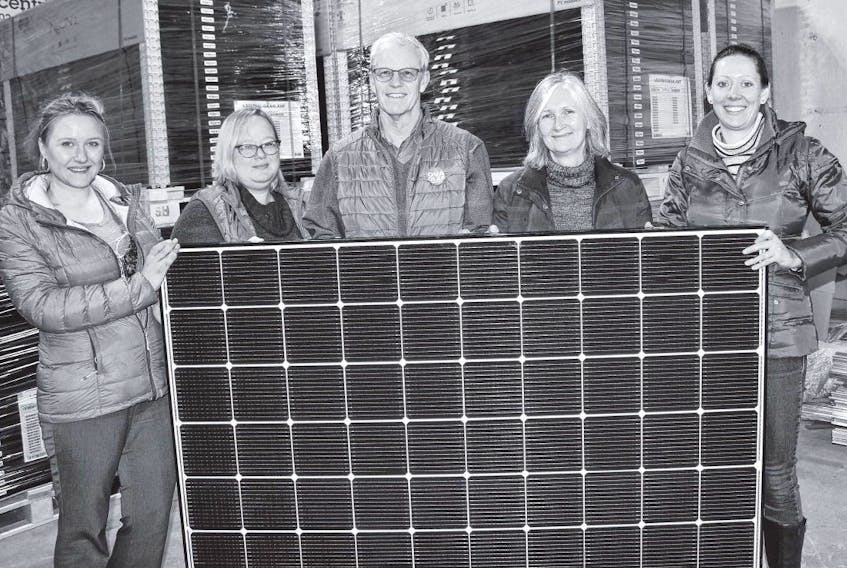Kentville-based Nova Solar Capital Inc. is in the installation phase of its first project, which will see 42 solar panel systems installed around the province through a community economic development investment fund that raised more than $1 million.
The solar projects development company is already planning a new share issue by its Community Economic Development Investment Fund (CEDIF), Solar Scotia Energy Inc., in January and is awaiting regulatory approval.
About three-quarters of the properties in the first phase are mostly completed, said marketing director Amanda Brule. “We’re really pleased with the progress to get through this first phase. It’s been a long a time coming, but we’re happy to be there.”
The offering was launched in July and was full by the end of the month.
Then came ordering equipment, which had a momentary snag. The United States moved toward imposing a tariff on solar power equipment coming into the country, sparking a buying frenzy by projects underway there that drained the global supply of solar panels.
That left Nova Solar unable to find panels. But, company cofounder and president Andrew Bagley said, when he contacted the director of sales in Canada for LG he was told that “he had been contacted by their office in Seoul, (and told) to contact us (the company), because they had read about our project.”
That put things back on track, with the companygetting the panels it
needed to do the installations.
Brule said while the company has been primarily focused on residential work, it has been contacted by a number of businesses that are interested in similar installations.
“What we want to do going into this year is have a good commercial solution.”
She said outside of the tax credits and economic benefit, “a lot of businesses look at it as making a difference for them to be able to say they’re getting their energy through renewable sources. . . . Customers love that.”
The CEDIF uses the funds raised, usually by the property owner looking to install the panels, to buy solar hardware and lease it to the customer.
The equipment is leased over 10 years with a small buyout. The equipments lasts up to 30 years, so there is another 15 or 20 years of the equipment generating free electricity once the system is paid for.
“The economics are really good,” Brule said.
The property has a bi-directional metre installed so, as electricity is generated, what is not needed at that time for household use goes onto the grid for Nova Scotia Power and the owner gets a credit, which can be applied to the regular power bill to cover times of increased demand or decreased power generation.
“It’s a great alternative to battery storage because batteries are one of the most expensive parts of the system,” Brule said.
The program, and solar power in general, are popular, Bagley said.
“I think people’s desire for renewable energy has run way ahead of what governments appreciate,” he said. “People know about global warming and climate change and want to do their part.”
The company was named Outstanding New Business of the Year at the 2017 Annapolis Valley Chamber of Commerce Business Awards last month.
It says the increase in solar generation will keep approximately 10,000 tonnes of carbon dioxide out of the atmosphere over the lifetime of the systems, which is the equivalent of planting 2,000-3,000 trees in Nova Scotia, or taking 44 cars off the road.









